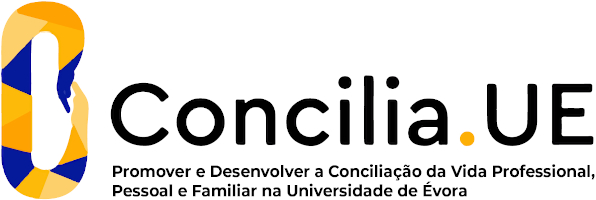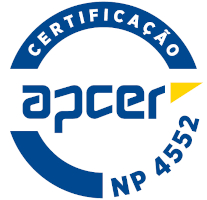2024
History of the XX Architecture
Name: History of the XX Architecture
Code: ARQ02524I
3 ECTS
Duration: 15 weeks/78 hours
Scientific Area:
Architecture
Teaching languages: Portuguese
Languages of tutoring support: Portuguese, English
Regime de Frequência: Presencial
Presentation
Western architectural culture from the artistic avant-garde to the architecture of deconstruction and beyond.
Sustainable Development Goals
Learning Goals
Movimento Moderno e Outras Arquitecturas is the central theme of curricular unit of Architecture of XX
Century:
1. Approach to territory and landscape, cities and buildings of XX Century, showing, wider, the Architectonic
Culture of this period, (focusing particularly late 1910 and beginning of the seventies) as well as their
existential dimensions.
2. Critical identification and characterization of one set of real estate of XX Century, circumscribing logic,
matrices, models and fundamental themes, aiming to increase and enrich students architectonic culture.
3. Critical and identification dismantling of connexions space, shape, architectonic materiality and fruition in
paradigmatic study cases of XX Century Architectures, looking for delivering knowledge and tools able to
stimulate creativity and the Architecture Project process.
Century:
1. Approach to territory and landscape, cities and buildings of XX Century, showing, wider, the Architectonic
Culture of this period, (focusing particularly late 1910 and beginning of the seventies) as well as their
existential dimensions.
2. Critical identification and characterization of one set of real estate of XX Century, circumscribing logic,
matrices, models and fundamental themes, aiming to increase and enrich students architectonic culture.
3. Critical and identification dismantling of connexions space, shape, architectonic materiality and fruition in
paradigmatic study cases of XX Century Architectures, looking for delivering knowledge and tools able to
stimulate creativity and the Architecture Project process.
Contents
The 8 tomes of OEuvre Complète of Le Corbusier are the basis to the follow structure:
1. Preamble to XX Century Architectures.
2. Creation of Modernism: from OEuvre Complète 1910-29.
3. Assertion of Modernism: from OEuvre Complète 1910-29.
4. Confirmation of Modernism: from OEuvre Complète 1910-29.
5. Reconfirmation of Modernism: from OEuvre Complète 1929-34.
6. Reorientations and Crisis of Modernism: from OEuvre Complète 1929-34 and 1934-38.
7. Resistance and regionalization of Modernism: from OEuvre Complète 1934-38.
8. Re-consecration of Modernism: from OEuvre Complète 1946-52.
9. Continuity and Disjunction in Modernism: from OEuvre Complète 1952-57.
10. Monuments and Monumentality in Modernism: from OEuvre Complète 1952-57.
11. Extension, Plurality and Critiques to Modernism: from OEuvre Complète 1957-65 and 1965-69.
12. Permanence of Architectonic Culture of XX Century today.
1. Preamble to XX Century Architectures.
2. Creation of Modernism: from OEuvre Complète 1910-29.
3. Assertion of Modernism: from OEuvre Complète 1910-29.
4. Confirmation of Modernism: from OEuvre Complète 1910-29.
5. Reconfirmation of Modernism: from OEuvre Complète 1929-34.
6. Reorientations and Crisis of Modernism: from OEuvre Complète 1929-34 and 1934-38.
7. Resistance and regionalization of Modernism: from OEuvre Complète 1934-38.
8. Re-consecration of Modernism: from OEuvre Complète 1946-52.
9. Continuity and Disjunction in Modernism: from OEuvre Complète 1952-57.
10. Monuments and Monumentality in Modernism: from OEuvre Complète 1952-57.
11. Extension, Plurality and Critiques to Modernism: from OEuvre Complète 1957-65 and 1965-69.
12. Permanence of Architectonic Culture of XX Century today.
Teaching Methods
a. Participatory lectures
b. Reading and analysing texts
c. Written attendance tests
Passing the course can be achieved through one of the following assessment regimes, in accordance with the Academic Regulations (available on the SIIUE):
Continuous Assessment regime(CA);
Final Assessment regime (FA).
b. Reading and analysing texts
c. Written attendance tests
Passing the course can be achieved through one of the following assessment regimes, in accordance with the Academic Regulations (available on the SIIUE):
Continuous Assessment regime(CA);
Final Assessment regime (FA).
Assessment
Continuous Assessment regime (CA):
2 written tests (WT1 and WT2) + participation (P). The Final Grade (FG) is calculated using the formula: FG = {[(WT1+WT2): 2]x0,90}+(Px0,10)
Students with FG ≤9.4 fail CA and have access to the Resit Exam, consisting of a written (W) and oral (O) test.
Access to the oral exam (O) requires a mark ≥7.5 in the written exam (W). A mark of ≥9.5 in the written exam (W) allows the oral exam (O) to be exempt.
The Final Grade (FG) is calculated according to one of the formulae:
FG = {(E+O):2]x0,60)} + (WT1 or WT2x0,40) or NF = (Ex0,60) + [(F1 or F2)x0,40].
A student who misses WT1 or WT2 will proceed to the Final Assessment regime.
Final Assessment regime (FA):
The Normal Exam (NE) and the Resit Exam (RE) consist of a written test (W) and an oral test (O).
Access to the oral exam (O) requires a mark ≥ 7.5 in the written test (W). The Final Grade (FG) for NE and RE is calculated according to the formula:
FG= (E+O):2
2 written tests (WT1 and WT2) + participation (P). The Final Grade (FG) is calculated using the formula: FG = {[(WT1+WT2): 2]x0,90}+(Px0,10)
Students with FG ≤9.4 fail CA and have access to the Resit Exam, consisting of a written (W) and oral (O) test.
Access to the oral exam (O) requires a mark ≥7.5 in the written exam (W). A mark of ≥9.5 in the written exam (W) allows the oral exam (O) to be exempt.
The Final Grade (FG) is calculated according to one of the formulae:
FG = {(E+O):2]x0,60)} + (WT1 or WT2x0,40) or NF = (Ex0,60) + [(F1 or F2)x0,40].
A student who misses WT1 or WT2 will proceed to the Final Assessment regime.
Final Assessment regime (FA):
The Normal Exam (NE) and the Resit Exam (RE) consist of a written test (W) and an oral test (O).
Access to the oral exam (O) requires a mark ≥ 7.5 in the written test (W). The Final Grade (FG) for NE and RE is calculated according to the formula:
FG= (E+O):2
Teaching Staff
- João Gabriel Candeias Dias Soares [responsible]
- Júlia Zurbach Varela





















